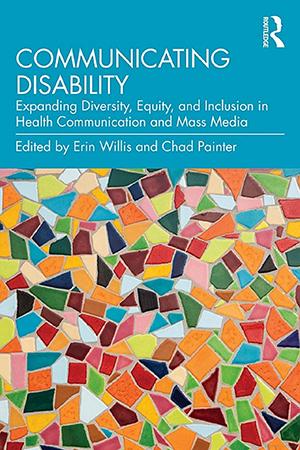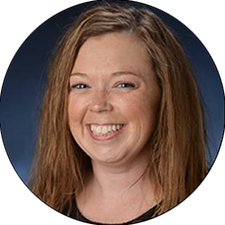A positive influence
Few people think about disability until it happens to them or someone they love. Now, a new book by an expert in health communication is challenging scholars to rethink how they consider disability in their own research work.
“Really being aware of disability, and asking about it and learning about it—that’s what we're trying to do with this book,” said Erin Willis, an associate professor in the Department of Advertising, Public Relations and Design at CU Boulder’s College of Communication, Media, Design and Information. “How are you experiencing it in your life? Who do you encounter? Do you see it on TV?”

Those are fundamental questions that scholars have long ignored—and she puts herself in that category, as well. Willis is an expert in online health communities who has done pathbreaking work in the study of patient influencers, who amass a following by sharing their lived experiences with medical conditions.
But though she’s been interested in health communication since graduate school, “I haven’t come across this idea of disability,” she said. “It’s not something we think about on a day-to-day basis.”
That led her to the new book she co-edited, Communicating Disability: Expanding Diversity, Equity and Inclusion in Health Communication and Mass Media.
Health communication has traditionally focused on health disparities or health equity, with an emphasis on how to change patient behaviors. Willis wants to bring disabled people into the conversation—“not just in a way that we’re trying to fix or prevent the ailment, but that really includes them in the community,” she said.
One chapter of the book that Willis co-authored looks at two models of disability, and how they impact health communication. The medical model focuses on patients, and fixing what is wrong: the ailment or disease.
“When you think about disability in the medical model, you can never be fixed. Your disability might be permanent, and so therefore, something is always wrong with you,” she said. The social model, meanwhile, encompasses the environment and stigma that limit accessibility—literally and figuratively—and calls for structural change to foster inclusion.
Overcoming shame, isolation

Another chapter Willis edited is close to her influencer work, and dives into how online amplification of disabled peoples’ experiences erases stigma.
“Social media have given opportunities to a niche group to really be seen, whereas traditional media might have overlooked them,” Willis said.
Take ostomy, for example, a surgery that creates a new opening for urine or poop to exit into a pouch outside the body. Grassroots efforts to discuss the condition on TikTok and Instagram have helped people with ostomy overcome the shame and social isolation they may feel.
That means people with disabilities no longer have to rely on mainstream media outlets to define their issues or the challenges they face in doing their work.
“Social media have given opportunities to a niche group to really be seen, whereas traditional media might have overlooked them.”
Erin Willis, associate professor, APRD
“Social media has really opened the doors to find each other,” Willis said. “This really fills a gap where all these people did not have this peer support before. It’s all these small things that make a difference.”
Willis is doing further research into disability influencers, some of whom have millions of followers on social media and are reaching far beyond people with the same condition.
“It's an emotional connection. Some kind of curiosity is being stemmed,” she said.
Willis co-edited the book with Chad Painter, an associate professor of communication at the University of Dayton. Some of the book’s authors are disabled—including Willis, who has had severe rheumatoid arthritis since she was 2.
“I do have a disability,” she said. “Despite me saying that, I have never identified as having a disability. This book has really made me think about myself and how I identify with disability—and what that means, even.”

